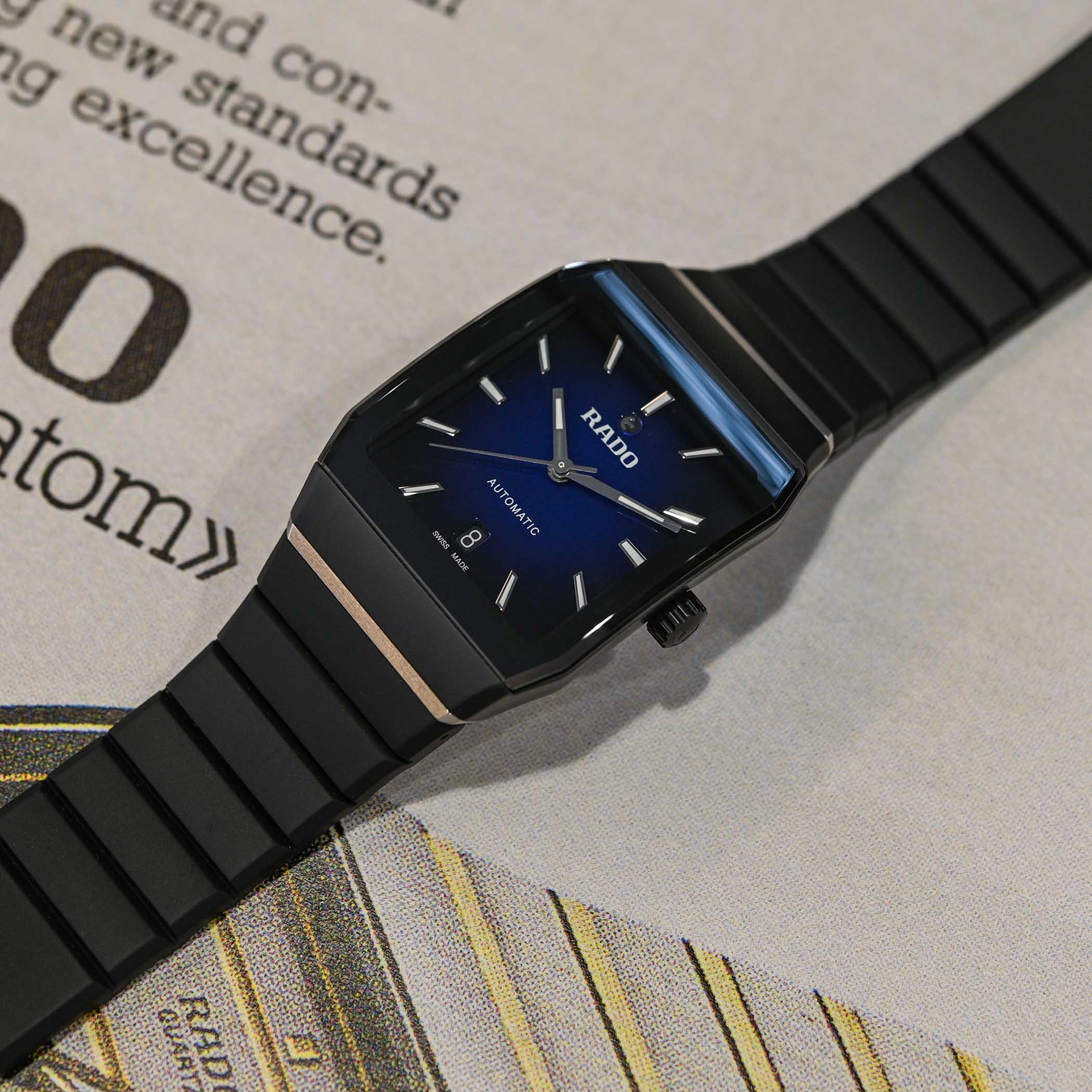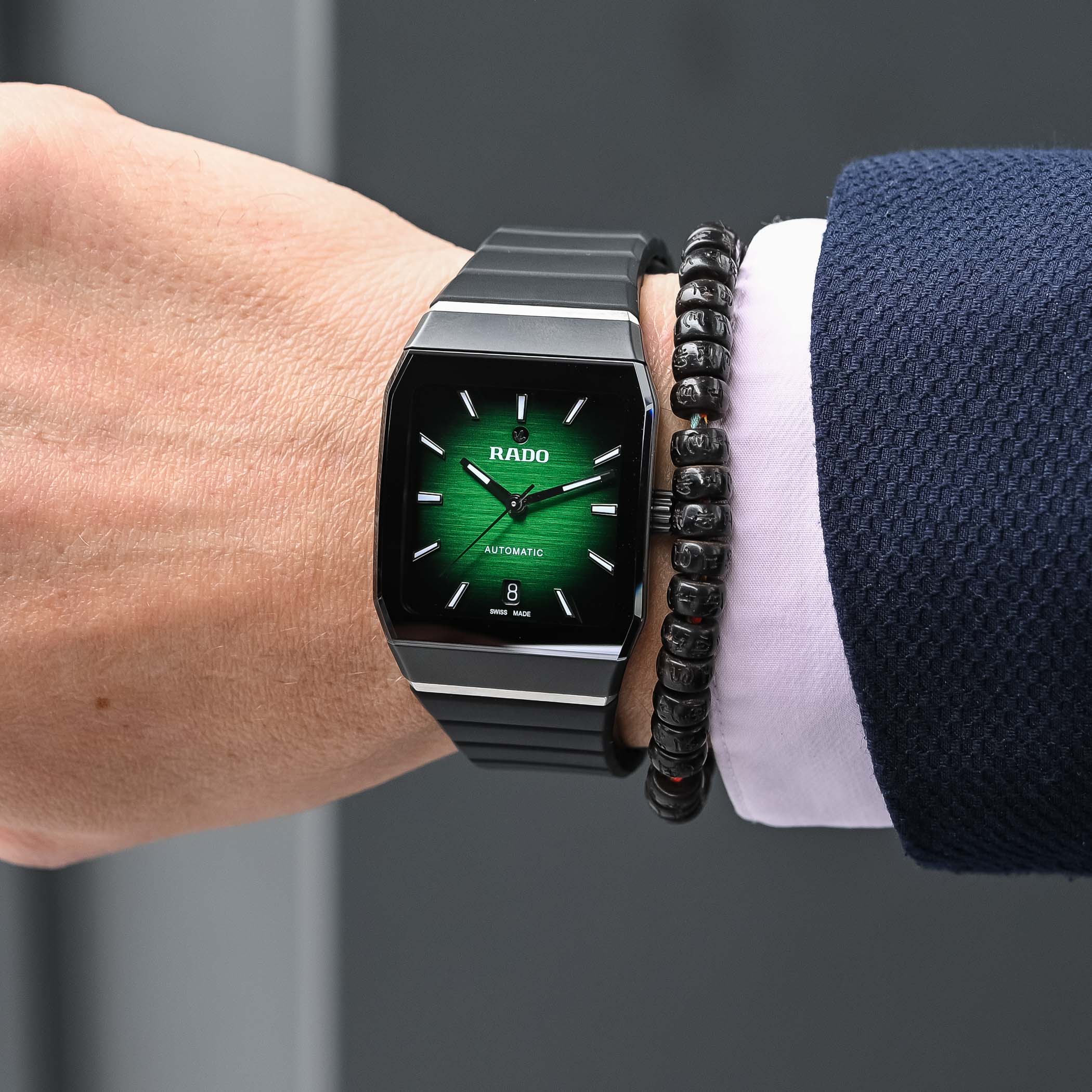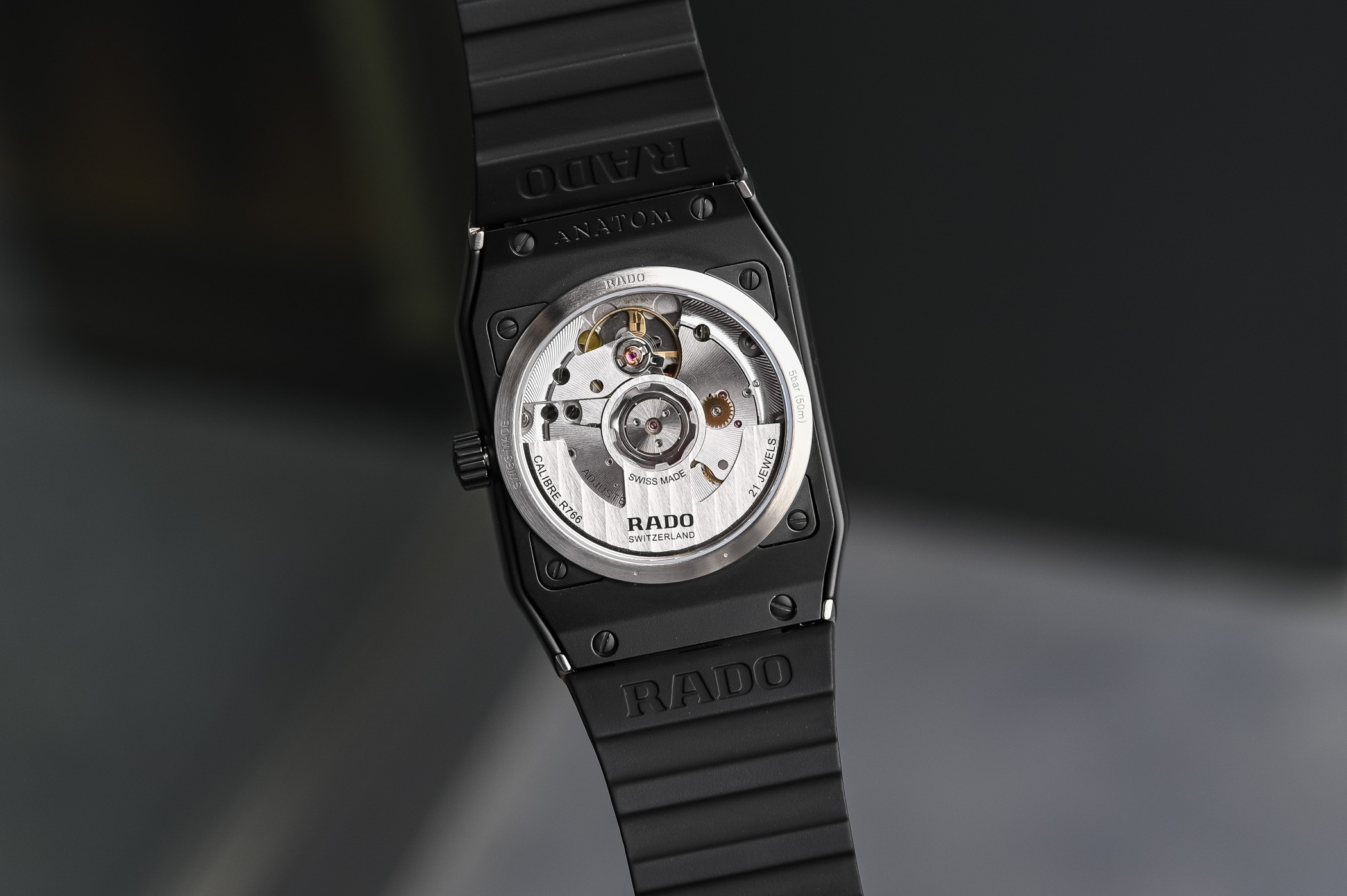The Return of Rado’s Anatomically Perfect Anatom Collection
Rado stages the comeback of its sleek ergonomic 1980s Anatom watch in high-tech ceramic and sapphire crystal.

A brand with a distinctive identity, Rado is widely recognised as a pioneer of innovative materials, starting with the world’s first scratchproof material used on board the DiaStar of 1962 and evolving to become a reference in the production of high-tech ceramic cases. Interestingly, Rado has developed these materials in tandem with the brand’s other facet as a designer of contemporary case shapes. Using the same materials as the famous DiaStar, the first Anatom of 1983 fused a resilient Hardmetal case with a sleek, flat, ergonomic watch design that flowed perfectly around the wrist. Celebrating its 40th anniversary, the Rado Anatom stages a comeback with four references designed to highlight its elegant silhouette in silky smooth black high-tech ceramic with an edge-to-edge sapphire crystal following the anatomy of the case.
Geometric shapes
Rado’s fascination with square and rectangular-shaped watches materialised with the waterproof Manhattan model of 1967, followed by collections like the Glissière, the V2200, the Anatom, the Integral, the Ceramica and the Sintra. Carrying the torch in the 21st century, the r5.5 and the True Square perpetuate Rado’s talent for geometrically shaped watches.
Rado’s name for the collection, Anatom, clearly references the ‘anatomical’ aspect of its ergonomic design. Catalogued initially as a member of the DiaStar collection, captained by the world’s first scratchproof watch made from a tungsten-carbide alloy known as Hardmetal, the Anatom combined extraordinary resilience with a fresh, more fluid design. With the Anatom, Rado proved that a durable and ergonomic design was as important as its use of innovative and hard-wearing materials.

The Importance of Flow
With the advent of synthetic sapphire crystal – that can match and even surpass the hardness of metal – new horizons opened for watchmakers. No longer requiring a frame to protect the glass, Rado discovered that sapphire crystal could be milled and shaped with diamond tools, contributing to the smooth, sensuous shapes of the first Anatom watches. As the Anatom evolved, its anatomy was streamlined further, extending to the brace and case attachments to produce a pure, flowing shape. The models of the early 1980s were equipped with fashionable quartz movements until the first automatic movement model joined the collection in the late 1990s.
Ceramic and Sapphire Crystal
In addition to its resilient, scratchproof and hypoallergenic qualities, the beauty of a ceramic case has to do with its tactility. Inviting to the touch, ceramic is smooth and silky and responds to changes in body temperature like a second skin. Rado introduced high-tech ceramic in 1986, a lightweight yet hyper-resilient material with a 1,250 Vickers rating. Surpassing the hardness of high-tech ceramic with a 2,000 Vickers score, Rado also masters the production of sapphire crystal, an integral design component of the Anatom. According to the press release, there are more than “sixty critical steps in the production of the Anatom’s final anatomically shaped crystal.”
The 2023 Rado Anatom
Forty years after its debut, Rado looks back at this exceptional product, revisiting the Anatom in black high-tech ceramic with an impressive edge-to-edge sapphire crystal following the anatomical contours of the watch. While the shape of the watch is like the original Anatom, the materials, the size, and the dial texture are different. High-tech ceramic is used for the bezel and crown, while the middle case is black PVD steel. Compared to the original 1983 Anatom with its 28mm width, the new models measure 32.5mm across with a length of 46.3mm and a height of 11.3mm.
The three regular production references have black matte high-tech ceramic bezels and crowns, a black PVD sandblasted steel middle case and a steel caseback with a transparent sapphire crystal. The cylindrical sapphire crystal over the dial is bevelled, metallised in black and glued. Using a lacquered background with a horizontal satin-brushed finish, the gradient dials feature rhodium-coloured applied indices with white Super-LumiNova, Rado’s signature moving anchor symbol at noon, a date aperture at 6 o’clock and the inscriptions Rado and Automatic printed in white. Available in green, blue or cognac, the gradient dials get darker as the colour reaches the periphery, where it becomes black, blending into the black bezel.
The luxury Rado Anatom Limited Edition is limited to 40 pieces and differs from the regular production models with its brightly polished ceramic bezel. The glossy black lacquered dial is polished, and eleven baguette-cut diamonds are used as indices. The inscriptions Rado and Jubilé are printed in silver, and the application of Super-LumiNova is limited to the hour and minute hands.

Marking a first, the four new Anatom references are fitted with a sporty textured rubber strap with a triple-folding steel clasp covered with high-tech ceramic. Another common denominator across all four references is the automatic Rado calibre R766 powering the watch – which is not based on a Powermatic 80 this time. It is fitted with a slimmer, slightly higher-end evolution of the ETA 2892 with an extended power reserve of 72 hours and an anti-magnetic Nivachron hairspring.
Availability & Price
The Limited Edition Rado Anatom of 40 pieces is delivered in an individually numbered 40th Anniversary box and retails for EUR 11,300. The three regular production Rado Anatom references retail for EUR 3,750. For more information, please visit rado.com.














5 responses
Hard to believe this is thicker than my u50 with 500m of WR, albeit not by much! I’ve been hunting for an old ceramica for some time.
Looks like their using the same movement Longines’ uses. The 3.5hz 2892 based movement? That makes a lot of sense. They put Rado in the same tier as Longines but Rado was putting Powermatic 80’s in their watches, that you can get with Tissot or Hamilton (Mido, Certina). This makes a lot more sense. And woo that price.
Look at those prices !!! AYYYYY
Being a Rado I am sure it is nice but now an expensive watch. It strikes me a looking a little cheep discount brand.
They should have left rhe anchor on captain cook.